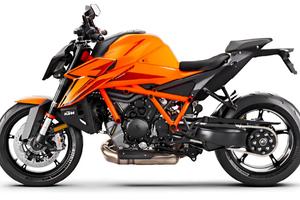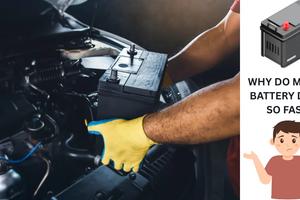How to Check a VIN Number on a Car for Free: Complete Guide to Vehicle History Reports

Key Takeaways
Essential insights to remember
Find your car's VIN in multiple locations including dashboard, door jamb, and documents
Use free online tools and government databases to decode VIN information instantly
Verify vehicle history, ownership, accidents, and theft status before purchasing
Understand each digit's meaning to identify year, manufacturer, and specifications
Protect yourself from fraud by authenticating VIN plates and matching numbers
Introduction
Whether you're eyeing that perfect used car on Craigslist, preparing to bid at an auction, or simply want to verify your current vehicle's history, knowing how to check a VIN number on a car for free is your first line of defense against automotive fraud and costly surprises.
The Vehicle Identification Number (VIN) serves as your car's unique fingerprint—a 17-character code that unlocks a treasure trove of information about manufacturing details, ownership history, accident records, and potential red flags.
💡 Expert Insight: "A VIN check should be the very first step in any vehicle transaction. I've seen buyers save thousands of dollars simply by discovering flood damage or outstanding liens before signing on the dotted line." — Certified Automotive Technician
In this comprehensive guide, you'll discover multiple free methods to decode and verify any vehicle's history, learn where to locate VIN numbers on different car types, and master the art of interpreting the data to make informed purchasing decisions.
From government databases to manufacturer resources, we'll explore legitimate ways to access crucial vehicle information without spending a dime, while also teaching you how to spot VIN tampering and authenticate the numbers you find.
Ready to become a VIN-checking expert? Let's dive into the essential knowledge that could save you from your next automotive nightmare.
What is a VIN Number and Why Should You Check It?
A Vehicle Identification Number (VIN) is a unique 17-character alphanumeric code that serves as your vehicle's DNA—no two cars share the same VIN. Think of it as a automotive social security number that follows your car from the assembly line to the scrapyard, recording every significant event in its lifecycle.
The Evolution of VIN Standardization
The current 17-digit system, implemented by the National Highway Traffic Safety Administration (NHTSA), creates over 30 million unique combinations annually. This standardization revolutionized vehicle tracking, making it virtually impossible for legitimate vehicles to share identical codes.
Why VIN Verification is Financially Critical
⚠️ Legal Requirement Alert: In many jurisdictions, selling a vehicle without disclosing known defects discovered through VIN checks constitutes fraud. Buyers have legal recourse when sellers conceal material information.
The Anatomy of Modern Vehicle Tracking
Every time your car interacts with official systems—registration renewals, insurance claims, service appointments, emissions testing, or police encounters—that data links directly to the VIN. This creates an comprehensive digital trail that reveals:
Manufacturing Intelligence:
- 🏭 Assembly plant location and date
- 🔧 Engine specifications and transmission type
- 🎨 Original paint color and trim packages
- ⚙️ Safety equipment and recall eligibility
Ownership & Financial History:
- 👥 Number of previous owners and duration
- 💰 Lease vs. purchase history
- 🏦 Current and past loan obligations
- 📋 Commercial use (taxi, rental, fleet)
Damage & Maintenance Records:
- 🚗 Accident reports and insurance claims
- 🔧 Major repair and service history
- 🌊 Flood, fire, or hail damage incidents
- 🏁 Lemon law buyback status
Understanding your legal rights regarding VIN information empowers you to make informed decisions. In most states, buyers have the right to inspect and verify VIN numbers before purchase, and sellers cannot legally obstruct legitimate verification efforts.
Where to Find the VIN Number on Any Car
Locating your vehicle's VIN might seem straightforward, but manufacturers strategically place these crucial identifiers in multiple locations to prevent tampering and ensure accessibility during inspections. Understanding all possible VIN locations empowers you to cross-reference and verify authenticity—a critical step in fraud prevention.
Primary VIN Locations on the Vehicle
🚗 Dashboard Windshield Area (Most Common)
This location remains the industry standard because it's easily accessible to law enforcement and buyers while being difficult for thieves to alter without obvious evidence. The VIN plate here typically features tamper-resistant rivets and should appear weathered consistently with the vehicle's age.
🚪 Driver's Side Door Assembly
Federal Safety Certification Label locations:
- Door jamb sticker: Inside the door frame where it latches
- Door pillar post: Vertical support between front and rear doors
- Door edge: Sometimes printed directly on the door itself
💡 Pro Tip: The door jamb VIN should match the dashboard VIN exactly. Any discrepancies indicate potential VIN cloning or parts swapping—immediate red flags requiring further investigation.
🔧 Engine Compartment Areas
Secondary and Hidden VIN Locations
🛞 Trunk and Wheel Well Areas
Modern vehicles often feature hidden VIN stamps in locations known primarily to manufacturers and law enforcement:
Trunk area identifiers:
- Under spare tire compartments
- Rear deck lid hinges
- Inside trunk weatherstripping channels
Wheel well locations:
- Inner fender wells (particularly rear driver's side)
- Suspension mounting points
- Frame rail stampings
VIN Locations on Vehicle Documents
📋 Official Registration Documents
Primary sources for documented VIN verification:
- Title certificate: Usually prominently displayed near vehicle description
- Registration card: Front page, often in header section
- Insurance policy: Listed under vehicle identification details
- Finance agreements: Required for all loan and lease contracts
📖 Manufacturer Documentation
Factory and dealer paperwork:
- Owner's manual cover or first pages
- Window sticker (Monroney label) reproduction
- Service manual identification pages
- Warranty cards and booklets
🌍 International Note: In the UK and some European countries, the VIN is called the "chassis number" but serves identical functions. MOT certificates list this as the primary vehicle identifier.
Special Considerations for Different Vehicle Types
🏍️ Motorcycles and ATVs
Typical locations:
- Frame neck area (most common)
- Engine case stampings
- Swing arm mounting points
- Registration documents
🚛 Commercial and Heavy Vehicles
Additional VIN placements:
- Cab door frames
- Chassis rail stampings
- DOT compliance plates
- Fleet identification tags
Understanding these various VIN locations enables comprehensive verification that protects against sophisticated fraud schemes. Next, we'll decode what each character in that 17-digit sequence actually reveals about your vehicle.
How to Decode a VIN Number: Understanding Each Digit
Every character in a VIN tells a specific story about your vehicle's origins, specifications, and manufacturing details. Learning to decode these positions transforms that seemingly random string of letters and numbers into a comprehensive vehicle profile—empowering you to verify seller claims and identify potential discrepancies.
The Three-Section VIN Structure
World Manufacturer Identifier (WMI) - Positions 1-3
Position 1: Country of Origin/Final Assembly
Position 2: Manufacturer Identification
This digit refines the manufacturer within each country. For example, in the United States:
- 1H = Honda
- 1F = Ford
- 1G = General Motors
- 1C = Chrysler
Position 3: Vehicle Type/Manufacturing Division
Combined with positions 1-2, this creates the unique World Manufacturer Identifier:
- 1HG = Honda automobiles
- 1HF = Honda motorcycles
- 1GC = Chevrolet trucks
Vehicle Descriptor Section (VDS) - Positions 4-9
Positions 4-8: Vehicle Characteristics
Example Decoding: Honda Accord
- Position 4: B = 4-door sedan
- Position 5: H = 2.4L 4-cylinder engine
- Position 6: 4 = Accord model line
- Position 7: 1 = Active restraints, front airbags
- Position 8: J = Specific engine variant
Position 9: Check Digit (Fraud Detection)
🔍 Mathematical Verification: The ninth position uses a complex algorithm developed by the U.S. Department of Transportation. Each VIN character receives a numerical weight, and the calculation must equal the check digit—making VIN forgery mathematically detectable.
Check digit calculation prevents:
- Transposition errors during data entry
- Intentional VIN alteration attempts
- Fraudulent VIN creation
Vehicle Identifier Section (VIS) - Positions 10-17
Position 10: Model Year Code
Position 11: Assembly Plant Code
Each manufacturer assigns unique codes to their production facilities:
- Honda: A = Marysville, OH; M = Anna, OH
- Toyota: 1 = Georgetown, KY; 5 = San Antonio, TX
- Ford: F = Dearborn, MI; U = Louisville, KY
Positions 12-17: Sequential Production Number
These final six digits represent the vehicle's production sequence at the specific plant. Unlike other positions, this number system varies by manufacturer:
Production numbering systems:
- Most manufacturers: Start at 000001 for each model year
- Some luxury brands: Use higher starting numbers for exclusivity
- Limited editions: May skip number ranges
💡 Collector's Insight: Low sequential numbers (000001-000100) often indicate early production models, which can be valuable for collectors but may also represent vehicles with early production issues that were later resolved.
Sample Complete VIN Breakdown: 1HGBH41JXMN109186
- 1HG: Honda automobile, USA
- BH41J: 4-door Accord, 2.4L engine, specific trim
- X: Check digit verification
- M: 2021 model year
- N: Marysville, Ohio assembly plant
- 109186: 109,186th vehicle produced at that plant
Understanding VIN decoding enables you to verify seller claims about year, origin, engine type, and production details—essential knowledge for detecting misrepresented vehicles.
Free VIN Check Tools and Websites
While premium vehicle history reports offer comprehensive data, numerous legitimate free resources provide substantial information for budget-conscious buyers. Understanding which tools deliver reliable results—and their limitations—enables you to maximize your research without unnecessary expenditure.
Government and Official Resources
🏛️ National Highway Traffic Safety Administration (NHTSA)
What NHTSA reveals:
- Active safety recalls and remedies
- Technical service bulletins
- Defect investigation status
- Manufacturing specifications
- Crash test ratings for specific trim levels
🚔 National Insurance Crime Bureau (NICB)
The VINCheck service provides critical theft and total loss information:
⚠️ Critical Limitation: NICB only shows vehicles reported to participating insurers. Private sales, minor accidents, and unreported incidents won't appear in results.
🇦🇺 Personal Property Securities Register (PPSR) - Australia
For Australian buyers, the PPSR reveals financial encumbrances and security interests:
Free PPSR search includes:
- Outstanding loans and liens
- Previous write-off status
- Stolen vehicle notifications
- Registration history
Manufacturer and Dealer Resources
🏭 Manufacturer Official Websites
Most major automakers offer free VIN lookup services revealing:
Honda: Build specifications, warranty status, recall eligibility Toyota: Manufacturing details, TSB information, genuine parts verification
Ford: Option codes, service campaigns, owner manual downloads GM: OnStar eligibility, warranty coverage, authentic accessories
🔧 AutoZone Free VIN Decoder
Strengths:
- Detailed specification breakdown
- Engine and transmission identification
- Body style and trim level verification
- No registration required
Limitations:
- No history or damage information
- Basic manufacturing data only
- Cannot detect title issues
Commercial Free Services
📋 Basic CARFAX Reports
CARFAX offers limited free information including:
- Number of previous owners
- Basic service record indicators
- Some accident history markers
- Title transfer dates
Accessing free CARFAX data:
- Used car dealership listings
- Manufacturer certified pre-owned programs
- Some private seller advertisements
- CARFAX Car Care app (limited features)
🔍 VinCheck.info and Similar Aggregators
These platforms compile data from multiple sources but require careful evaluation:
Understanding Free Service Limitations
🚫 What Free Reports Typically Miss
💡 Strategic Approach to Free Resources
Layer your research approach:
- Start with NHTSA for recalls and safety issues
- Check NICB for theft and total loss history
- Visit manufacturer site for build specifications
- Use AutoZone decoder for detailed specs verification
- Cross-reference multiple sources for consistency
🔄 Data Verification Rule: Never rely on a single free source. Legitimate vehicles show consistent information across multiple platforms, while problematic cars often reveal discrepancies when cross-referenced.
When to Consider Paid Reports
Upgrade to premium services if:
- Vehicle price exceeds $15,000
- Free reports show concerning indicators
- Buying from private party or auction
- Vehicle history shows gaps or inconsistencies
- Making final purchase decision
Cost-benefit analysis: A $40 comprehensive report can save thousands in hidden damage costs, making it worthwhile for significant purchases.
Understanding the capabilities and limitations of free VIN resources enables strategic research that maximizes information while minimizing costs. Next, we'll explore how to combine these tools into a comprehensive vehicle history verification process.
How to Run a Complete Vehicle History Check
A systematic approach to vehicle history verification combines multiple data sources, cross-references information for consistency, and identifies red flags that could indicate fraud or undisclosed damage. This comprehensive process protects your investment while ensuring legal compliance and safety.
Step-by-Step Complete VIN Verification Process
Phase 1: Initial Documentation and VIN Authentication
Authentication checklist:
- ✅ VIN plates securely fastened with original rivets
- ✅ Consistent character fonts and spacing
- ✅ No evidence of grinding, welding, or plate replacement
- ✅ Federal Safety Certification Label intact and matching
Phase 2: Government Database Verification
Essential government checks (in order of priority):
🚨 Immediate Stop Conditions: If government databases reveal active theft reports, open safety recalls affecting vehicle operation, or commercial vehicle violations, halt the purchase process and consult legal counsel before proceeding.
Phase 3: Comprehensive History Analysis
🏠 Ownership History Investigation
What to verify:
- Number of previous owners: Excessive transfers may indicate problems
- Ownership duration: Short-term ownership patterns suggest issues
- Geographic history: Regional factors affecting vehicle condition
- Title transfer consistency: Gaps in timeline require explanation
💥 Accident and Damage Assessment
Comprehensive damage investigation:
Insurance claim research:
- Major collision repairs and structural damage
- Paint work and panel replacement history
- Airbag deployment and replacement records
- Frame damage or structural modifications
Severity classification system:
- Minor: Cosmetic damage under $2,000
- Moderate: Structural repair $2,000-$10,000
- Severe: Frame damage or total loss threshold
- Catastrophic: Flood, fire, or theft recovery
🌊 Environmental Damage Detection
Natural disaster history verification:
💡 Professional Insight: Flood-damaged vehicles often appear in markets 6-12 months after major weather events. Cross-reference the vehicle's geographic history with FEMA disaster declarations during ownership periods.
Advanced Verification Techniques
🔢 Odometer Fraud Detection
Multi-source mileage verification:
- Service record progression analysis
- State inspection mileage recordings
- Insurance policy mileage declarations
- Auction or dealer transaction records
Red flag calculations:
- Annual mileage exceeding 25,000 miles: Commercial use likely
- Mileage decreases between records: Potential rollback fraud
- Inconsistent wear vs. mileage: Physical condition doesn't match odometer
🏦 Financial Encumbrance Research
Lien and loan verification:
- Outstanding loan balances
- Previous repossession history
- Current security interests
- Legal judgments or attachments
Red Flag Identification System
🚩 Critical Warning Indicators
Immediate disqualification factors:
- Active theft reports in any database
- Title brands: Salvage, Rebuilt, Lemon, Flood
- Multiple recent ownership transfers
- VIN tampering or inconsistencies
- Outstanding safety recalls affecting operation
Investigative priority indicators:
- Gaps in maintenance records
- Accident history without corresponding repairs
- Commercial use without disclosure
- Geographic inconsistencies in history
- Mileage discrepancies across sources
📋 Documentation Standards
Maintain comprehensive records:
- Screenshots of all database searches
- Photos of physical VIN locations
- Copies of seller-provided documents
- Timeline of ownership and major events
- Contact information for verification sources
🎯 Final Verification Rule: Before purchase, conduct one final comprehensive check 24-48 hours before transaction. Vehicle status can change rapidly due to new accident reports, theft notifications, or lien filings.
This systematic approach ensures no critical information escapes detection while building a defensible record of due diligence. Next, we'll address special considerations for different vehicle categories and unique scenarios.
Special Considerations for Different Vehicle Types
Different vehicle categories present unique challenges for VIN verification, requiring specialized knowledge and modified approaches. Understanding these distinctions ensures comprehensive evaluation regardless of vehicle type, age, or origin.
Classic Cars and Pre-1981 Vehicles
🏛️ Non-Standardized VIN Formats
Before 1981 standardization, manufacturers used varying identification systems creating verification complexities:
Era-specific identification approaches:
🔍 Alternative Verification Methods for Classics
Primary documentation sources:
- Build sheets and window stickers: Original factory documentation
- Enthusiast club registries: Marque-specific databases
- Insurance company archives: Historical claim records
- State DMV historical records: Long-term registration data
🏆 Collector's Insight: For valuable classics, consider hiring a marque specialist for authentication. Expert appraisers maintain private databases and can identify subtle signs of authenticity that general VIN tools miss.
Classic car verification checklist:
- ✅ Numbers-matching confirmation (engine, transmission, differential)
- ✅ Body tag and trim tag verification
- ✅ Paint code and option code validation
- ✅ Production date consistency with claimed model year
Motorcycles and Recreational Vehicles
🏍️ Motorcycle VIN Locations and Characteristics
Standard motorcycle VIN placement:
- Frame neck: Most common location near steering head
- Engine case: Often stamped separately with engine number
- Registration documents: Required for title verification
- Manufacturer plate: Usually near VIN stamping
Motorcycle-specific verification challenges:
🚁 ATVs and Off-Road Vehicles
Unique considerations for recreational vehicles:
- NHTSA exemptions: Some off-road vehicles lack standard compliance
- State registration variations: Requirements differ significantly
- Commercial vs. recreational use: Different regulatory frameworks
- Modification prevalence: Aftermarket parts affecting identification
Commercial and Fleet Vehicles
🚛 Heavy Duty and Commercial Trucks
Enhanced verification requirements:
Fleet vehicle identification markers:
- Previous commercial registrations
- Fleet management system records
- Commercial driver violation history
- DOT inspection records
🚗 Former Rental and Lease Vehicles
Detection and evaluation strategies:
Rental car indicators:
- High mileage accumulation in short periods
- Multiple geographic registrations
- Commercial plate history
- Fleet management company ownership
Lease return characteristics:
- Precisely timed ownership transfers
- Manufacturer financial company ownership
- Consistent maintenance intervals
- Warranty work concentration
📊 Statistical Reality: Former rental vehicles often receive excellent maintenance but experience intensive use. Focus on mechanical condition rather than cosmetic wear when evaluating these vehicles.
Imported and Foreign-Manufactured Vehicles
🌍 International VIN Compatibility
Global VIN standard adoption:
🚢 Import Documentation Verification
Gray market and parallel import considerations:
- Customs documentation: Import approval and compliance
- EPA certification: Emissions compliance verification
- DOT approval: Safety standard compliance
- State inspection requirements: Additional certification needs
Electric and Hybrid Vehicles
🔋 Modern Powertrain Verification
EV-specific identification elements:
- Battery pack history: Replacement, degradation, warranty status
- Charging system compliance: Recall and upgrade history
- Software version tracking: OTA update history
- Incentive eligibility: Federal and state rebate compliance
Hybrid system verification:
- Dual powertrain component identification
- Battery health assessment capabilities
- Manufacturer warranty transferability
- Service requirement specialization
🌱 Future-Proofing Tip: Electric vehicle VIN decoding increasingly includes battery chemistry, charging capabilities, and software versions. These details significantly impact resale value and upgrade compatibility.
Understanding vehicle type-specific verification nuances ensures comprehensive evaluation regardless of the specific automotive category. Next, we'll explore fraud detection and VIN authenticity verification techniques.
How to Verify VIN Authenticity and Avoid Fraud
VIN fraud has evolved into a sophisticated criminal enterprise, with thieves employing advanced techniques to clone, alter, or fabricate vehicle identification numbers. Protecting yourself requires understanding common fraud methods and implementing systematic authentication procedures.
Understanding VIN Fraud Techniques
🎭 Common VIN Cloning Methods
The anatomy of VIN cloning:
- Target identification: Criminals locate vehicles similar to stolen cars
- VIN harvesting: Recording legitimate VINs from parking lots, dealerships
- Physical alteration: Installing cloned VIN plates on stolen vehicles
- Document creation: Fabricating supporting paperwork
- Market distribution: Selling through private parties or unscrupulous dealers
Physical VIN Authentication Techniques
🔍 Professional-Level Plate Inspection
Authentic VIN plate characteristics:
🔬 Advanced Detection Methods
Forensic-level inspection techniques:
Light and angle analysis:
- Use flashlight at oblique angles to reveal grinding marks
- Look for color variations indicating recent metalwork
- Check for overspray or paint inconsistencies around VIN area
Touch and texture examination:
- Feel for smoothness indicating grinding or filing
- Check plate edges for cutting or modification signs
- Assess mounting point integrity and wear patterns
Federal Safety Certification Label Verification
📋 DOT Compliance Label Authentication
Critical label components:
- Manufacturer information: Name, address, manufacturing month/year
- GVWR (Gross Vehicle Weight Rating): Must match VIN specifications
- Vehicle identification: VIN must exactly match dashboard number
- Safety compliance: DOT and EPA certification statements
Authentication checklist:
- ✅ Label firmly adhered without loose corners or bubbles
- ✅ Print quality consistent with vehicle age
- ✅ Information matches VIN decoder specifications
- ✅ No evidence of removal, replacement, or alteration
⚖️ Legal Fact: Federal law requires the safety certification label on all vehicles sold in the US after 1968. Missing or obviously altered labels constitute immediate grounds for refusing purchase and reporting to authorities.
Cross-Reference Verification System
🔄 Multi-Point Consistency Checking
Systematic verification approach:
Stage 1: Physical locations
- Dashboard VIN plate
- Driver door jamb sticker
- Engine compartment markings
- Hidden frame stampings
Stage 2: Document verification
- Title certificate number
- Registration card VIN
- Insurance policy documentation
- Loan/lease paperwork (if applicable)
Stage 3: Database cross-check
- Government database results
- Manufacturer lookup results
- Commercial service reports
- State DMV record verification
Digital Fraud Detection
💻 Online Document Verification
Red flags in digital documentation:
- Poor image quality or obvious photo editing
- Inconsistent fonts or formatting in official documents
- Watermark abnormalities or missing security features
- Metadata inconsistencies in digital files
Verification techniques:
- Request original documents for in-person inspection
- Cross-reference document numbers with issuing agencies
- Verify security features (watermarks, special papers, official seals)
- Check document format against known authentic examples
Professional Authentication Services
🏆 When to Engage Experts
Scenarios requiring professional verification:
🚔 Law Enforcement Collaboration
When to involve authorities:
- Obvious VIN tampering discovered
- Stolen vehicle database matches
- Seller refuses verification cooperation
- Multiple fraud indicators present
Documentation for law enforcement:
- Photos of all VIN locations
- Screenshots of database searches
- Copies of seller communications
- Any suspicious documentation provided
Technology-Assisted Verification
📱 Mobile Apps and Tools
Recommended verification applications:
- NICB VINCheck App: Real-time theft database checking
- Manufacturer apps: Official VIN lookup and recall checking
- Photo comparison tools: Document side-by-side VIN analysis
- Database aggregators: Multi-source verification platforms
Digital documentation:
- Timestamp all verification photos
- Create verification timeline documentation
- Maintain screenshot evidence of database searches
- Store communication records with sellers
🔮 Future Technology: Blockchain-based VIN tracking and AI-powered authenticity detection are emerging technologies that will revolutionize fraud prevention in the coming years.
Understanding and implementing these authentication techniques provides robust protection against VIN fraud while ensuring legal compliance and financial security. Next, we'll explore specific best practices for different purchasing scenarios.
VIN Check Best Practices for Car Buyers
Different purchasing scenarios demand tailored VIN verification strategies. Understanding these context-specific approaches ensures comprehensive protection whether buying from dealers, private parties, or auctions, while maximizing your negotiating position and legal safeguards.
Pre-Purchase VIN Verification Timeline
📅 Strategic Timing for Maximum Protection
Why timing matters:
- Vehicle status can change rapidly (new accidents, theft reports)
- Early verification saves time on unsuitable vehicles
- Multiple checks catch recently updated information
- Final verification confirms no last-minute issues
Dealership Purchase Protocols
🏢 New Car Dealer Verification
Enhanced verification for dealer purchases:
💡 Insider Knowledge: Even new vehicles can have hidden issues. Transport damage, lot damage, or previous sale attempts may not be disclosed. Always verify the VIN shows no prior registrations or insurance claims.
🚗 Used Car Dealer Standards
Certified Pre-Owned verification:
- Manufacturer certification requirements compliance
- Multi-point inspection documentation review
- Extended warranty coverage confirmation
- Previous rental/fleet use disclosure verification
Private Party Purchase Strategies
👥 Individual Seller Verification
Enhanced due diligence for private sales:
Seller verification checklist:
- ✅ Photo ID matching title owner name. Many online platforms offer title search services that allow you to verify a vehicle’s ownership and title status.
- ✅ Current registration in seller's name
- ✅ Title free of liens or proper lien release
- ✅ Keys, manuals, and service records availability
Documentation authentication:
- Original title examination (not photocopy)
- Recent registration renewal verification
- Insurance policy showing current coverage
- Service receipts and maintenance records
🔍 Private Sale Red Flag System
Immediate disqualification indicators:
⚖️ Legal Protection: Private party sales offer fewer legal protections than dealer purchases. Comprehensive VIN verification becomes your primary defense against fraud and undisclosed issues.
Auction Purchase Considerations
🏛️ Live and Online Auction Protocols
Pre-auction preparation:
Auction-specific considerations:
- Limited inspection time during preview periods
- "As-is" sales with minimal return options
- Competitive bidding environment reducing decision time
- Potential for title delivery delays
🌐 Online Auction Platforms
Digital marketplace verification:
- Platform reputation: Verify auction site legitimacy and policies
- Seller feedback: Review historical transaction ratings
- Photo analysis: Examine VIN plate images for authenticity signs
- Communication verification: Direct seller contact for additional information
International and Import Vehicle Protocols
🌍 Cross-Border Purchase Verification
Additional verification requirements:
Import compliance verification:
- Customs documentation authenticity
- EPA emissions compliance certification
- DOT safety standard compliance
- State-specific registration requirements
Financial Transaction Protection
💰 Payment and Transfer Safeguards
Secure transaction protocols:
Payment protection methods:
- Escrow services for high-value transactions
- Cashier's checks with bank verification
- Wire transfers with confirmation requirements
- Never cash payments for expensive vehicles
Title transfer verification:
- Notarization requirements compliance
- Lien release documentation completion
- State transfer process adherence
- Registration transfer timeline understanding
Technology Integration Strategies
📱 Digital Tools for Modern Buyers
Recommended mobile verification workflow:
- Initial screening: Quick VIN lookup apps during initial viewing
- Comprehensive check: Full database verification before serious consideration
- Documentation: Photo evidence of all verification steps
- Backup verification: Secondary confirmation before final decision
Cloud-based documentation:
- Synchronize verification results across devices
- Share findings with advisors, mechanics, or family
- Maintain permanent record for future reference
- Enable quick comparison between multiple vehicles
🔮 Emerging Technology: Augmented reality VIN scanning and AI-powered fraud detection are becoming mainstream tools. Stay current with technological advances that enhance verification capabilities.
Post-Purchase Verification Protocols
✅ Final Confirmation Steps
Immediate post-purchase actions:
- Vehicle registration transfer completion
- Insurance policy activation with verified VIN
- Manufacturer warranty transfer (if applicable)
- Service history establishment with new ownership
Long-term monitoring:
- Periodic recall check scheduling
- Service record maintenance
- Insurance claim monitoring
- Resale value tracking
Understanding and implementing these purchase-specific protocols ensures comprehensive protection across all vehicle acquisition scenarios. Next, we'll address the most frequently asked questions about VIN verification.
Conclusion
Vehicle history verification through comprehensive VIN checking represents one of the most critical protective measures in automotive purchasing. This systematic approach transforms what could be a risky financial decision into an informed, confident transaction backed by verified facts rather than seller representations.
The Financial Impact of Proper VIN Verification
Investment protection through knowledge: The average vehicle purchase represents a significant financial commitment—often the second-largest expense after housing. Comprehensive VIN verification typically costs less than $500 (including professional inspection for higher-value vehicles) while protecting investments ranging from $15,000 to $100,000 or more. This represents an exceptional return on investment when considering potential losses from undisclosed damage, fraud, or safety issues.
Hidden cost avoidance: Undetected problems identified through thorough VIN checking commonly include structural damage requiring $5,000-15,000 in repairs, flood damage leading to progressive electrical failures, odometer fraud affecting resale values by 20-40%, and recall issues that could compromise safety and legal compliance. Early detection allows informed decision-making before financial commitment.
Beyond Financial Protection: Safety and Legal Compliance
Safety assurance through verification: VIN checking reveals critical safety information including active recalls, manufacturer defects, and accident history that could compromise vehicle integrity. This information protects not only your financial investment but also the safety of vehicle occupants and other road users. Many serious accidents result from unrepaired recall issues or structural damage from previous collisions.
Legal protection and compliance: Proper VIN verification creates a documented due diligence trail that protects against fraud accusations and provides evidence of good faith purchasing. This documentation proves invaluable if legal issues arise and demonstrates reasonable precautions that courts and insurance companies recognize as prudent buyer behavior.
The Technology Evolution Advantage
Current technological capabilities: Modern VIN verification leverages powerful databases, mobile applications, and verification networks that provide unprecedented access to vehicle information. Government databases, manufacturer systems, and commercial services create a comprehensive information ecosystem that makes thorough verification more accessible and accurate than ever before.
Future-proofing your approach: Emerging technologies including blockchain-based vehicle records, artificial intelligence fraud detection, and real-time database integration continue improving verification accuracy and accessibility. Developing strong VIN checking habits now positions you to leverage these advancing capabilities as they become mainstream.
Implementation Strategy for Long-Term Success
Creating verification standards: Establish personal minimums for VIN verification based on transaction value, vehicle type, and risk tolerance. These standards should include mandatory government database checks, physical VIN authentication, and professional inspection thresholds. Consistent application of these standards protects against decision fatigue and ensures thorough evaluation regardless of external pressures.
The Ripple Effect of Informed Vehicle Purchasing
Market improvement through informed buyers: When more buyers demand comprehensive vehicle history disclosure and perform thorough VIN verification, the entire used vehicle market improves. Honest sellers gain competitive advantages while fraudulent operators face reduced opportunities. Your individual verification practices contribute to broader market integrity and consumer protection.
Knowledge transfer and community protection: Sharing VIN verification knowledge with family, friends, and community members multiplies the protective impact of these practices. Teaching others about fraud detection, database utilization, and professional inspection benefits extends protection beyond individual transactions to entire social networks.
Final Recommendations for Immediate Implementation
Start with your current situation: If you currently own vehicles, perform comprehensive VIN verification on them to establish baseline knowledge and identify any issues requiring attention. This practice familiarizes you with verification processes using vehicles where you already know the history, building confidence for future purchase situations.
Prepare for future transactions: Bookmark essential VIN verification websites, download recommended mobile applications, and identify local professional inspection services before you need them. Having these resources readily available prevents rush decisions during time-sensitive purchasing opportunities.
🏆 Master-Level Insight: Professional vehicle evaluators and automotive investigators follow a simple rule: "Verify everything, trust nothing, document all findings." This mindset, combined with systematic verification procedures, provides maximum protection while enabling confident decision-making in any vehicle transaction scenario.
The ultimate verification philosophy: Comprehensive VIN checking represents more than due diligence—it embodies informed consumerism that protects your interests while contributing to market integrity. The knowledge, tools, and procedures outlined in this guide provide everything necessary to make this protection systematic, thorough, and reliable.
By implementing these verification practices consistently, you join a community of informed buyers who prioritize facts over marketing, evidence over assurances, and systematic protection over hopeful assumptions. This approach ensures that every vehicle transaction becomes an opportunity for confident, informed decision-making backed by comprehensive verification and professional standards.
The investment in proper VIN verification pays dividends not only in avoided problems and protected finances but also in the peace of mind that comes from knowing you've made informed decisions based on verified facts rather than seller representations. This knowledge and confidence become permanent assets that improve every future vehicle transaction throughout your lifetime.
Complete Vehicle History Verification Guide - End
This comprehensive guide provides the knowledge and tools necessary for professional-level VIN verification and vehicle history analysis. Apply these practices consistently to ensure informed, protected vehicle purchasing decisions.





